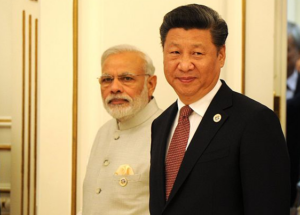By Jagdish N. Singh
EXECUTIVE SUMMARY: The Modi government in India is working hard to fight COVID-19 and save precious lives, both at home and abroad. However, it cannot afford to focus solely on the containment of the pandemic and the development of the national economy. The communist leadership in Beijing is taking advantage of India’s current predicament to advance its imperial aggression against the country, and this threat must be addressed.
On June 15, 2020, Chinese communist troops killed 20 Indian Army personnel, including the commanding officer of the 16th Bihar Regiment, in the Galwan Valley of Ladakh. India’s former Foreign Secretary Nirupama Rao pointed out in The Hindu that “[n]othing on this scale was witnessed even in the run-up to the conflict between the two countries in 1962.” According to one study, the recent violence was the worst since 1967.
In a media interview, India’s former Ambassador to China and Pakistan Gautam Bambawale confirmed that Beijing does not believe in its 1993 Border Peace and Tranquility Agreement and subsequent confidence-building agreements with India. China has assumed the right to unilaterally define the LAC (the Line of Actual Control) and to move its ground positions accordingly.
Former diplomat Jayant Prasad warns against any complacency vis-à-vis China because of the defusing of recent standoffs in Depsang, Chumar, and Doklam. There are reports of a Chinese build-up at Pangong Tso, in India’s eastern Ladakh.
New Delhi would do well to take steps to counter Beijing’s anti-India designs.
India cannot take on China economically. The current balance of India-China trade, according to one estimate, is in favor of Beijing. India’s imports from China in 2019-2020 reached $65 billion out of $81 billion in two-way trade.
New Delhi exports raw materials and intermediate products and imports finished products. Indian manufacturing depends on supplies from China. India imports fertilizers from China as well as critical medical supplies.
India does not attract global supply chains. China is still central to a large number of such chains. Some companies are moving out of China, but they are heading mainly toward Southeast Asia, not India.
India is not without options, however. New Delhi could use its status as the world’s largest democracy to rope powerful democratic states, including the US, Canada, the UK, France, Japan, South Korea, Australia, New Zealand, and Israel, into the project of isolating China on the diplomatic chessboard.
Much of the enlightened international community is furious over China’s role in the outbreak of COVID-19. There is widespread feeling that the WHO is under Beijing’s influence and has done little to arrest the virus. India could lead efforts to tackle the global health challenge and in the process expose China and isolate it internationally.
New Delhi could use its naval command to compel China to behave reasonably. Over 90% of Chinese trade moves through the Malacca Straits, which are near India’s Andaman-Nicobar Islands. India could play its card from there.
India’s ever growing bonhomie with the US can also be put to good use. The time is ripe for this. During his 2016 election campaign, Donald Trump claimed the Chinese were stealing jobs from the American people. US-China friction has only risen since then, hitting a new high during the pandemic. Trump claims that China is responsible for the virus, which has paralyzed the US economy and resulted in historic levels of unemployment and more than 100,000 American deaths.
The current administration in Washington is on excellent terms with India. President Trump has said he would like to expand the G-7 to G-11 by adding India (as well as Australia, Russia, and South Korea). Trump has even invited India’s PM Narendra Modi to attend the G-7 summit, which is likely to be held around the UN General Assembly session in September of this year. China is excluded from the prospective G-11.

No comments:
Post a Comment